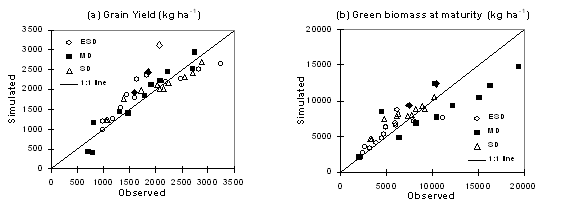PigeonPea
The pigeonpea module was developed by Michael Robertson and Peter Carberry at APSRU, and YS Chauhan, R Ranganathan, and G O’Leary of ICRISAT. APSIM-Pigeonpea belongs to the LEGUME family of crop modules in APSIM. The reader is referred to the science document for the legume module for a comprehensive description of the processes simulated by APSIM-Pigeonpea and to Robertson et al. (2001) for parameter derivation and model testing. This document outlines some pigeonpea-specific issues that are not covered by the legume science document.
Notable features of APSIM-PIGEONPEA
The phenology of pigeonpea cultivars are responsive to temperature and photoperiod, but not vernalisation.
APSIM-Pigeonpea is not phosphorus-responsive, this is currently under development.
Crop growth is not sensitive to waterlogging.
Go to generic Plant model documentation
Cultivars and crop classes
There is one crop class. There are three generic cultivars able to be simulated: extra short duration, short duration and medium duration. A long duration type was not able to be parameterised due to lack of data, however the module owner would be able to give advice on a long duration type if this were required by a user. Cultivar types differ in terms of biomass partitioning to grain and phenology.
Validation
APSIM-Pigeonpea has received testing in Central India , with factors such as cultivars, sowing date, irrigation, soil type, plant population density, row spacing varying. Validation of APSIM-Pigeonpea is described by Robertson et al. (2001). The accompanying figure demonstrates the performance of the module for grain yield and biomass.

Figure 1: Performance of the pigeonpea module (observed versus simulated grain yield and final biomass in kg/ha) against test datasets reported by Robertson et al. (2001).
References
Robertson MJ, Silim SN, Chauhan YS, Ranganathan R 2000a Predicting growth and development of pigeonpea: biomass accumulation and partitioning. Field Crops Research 70, 89-100.
